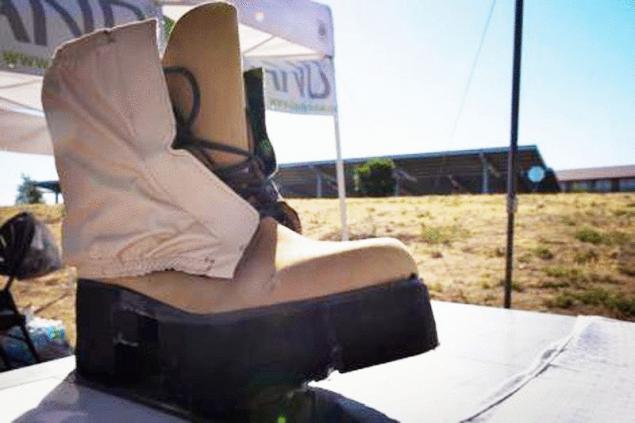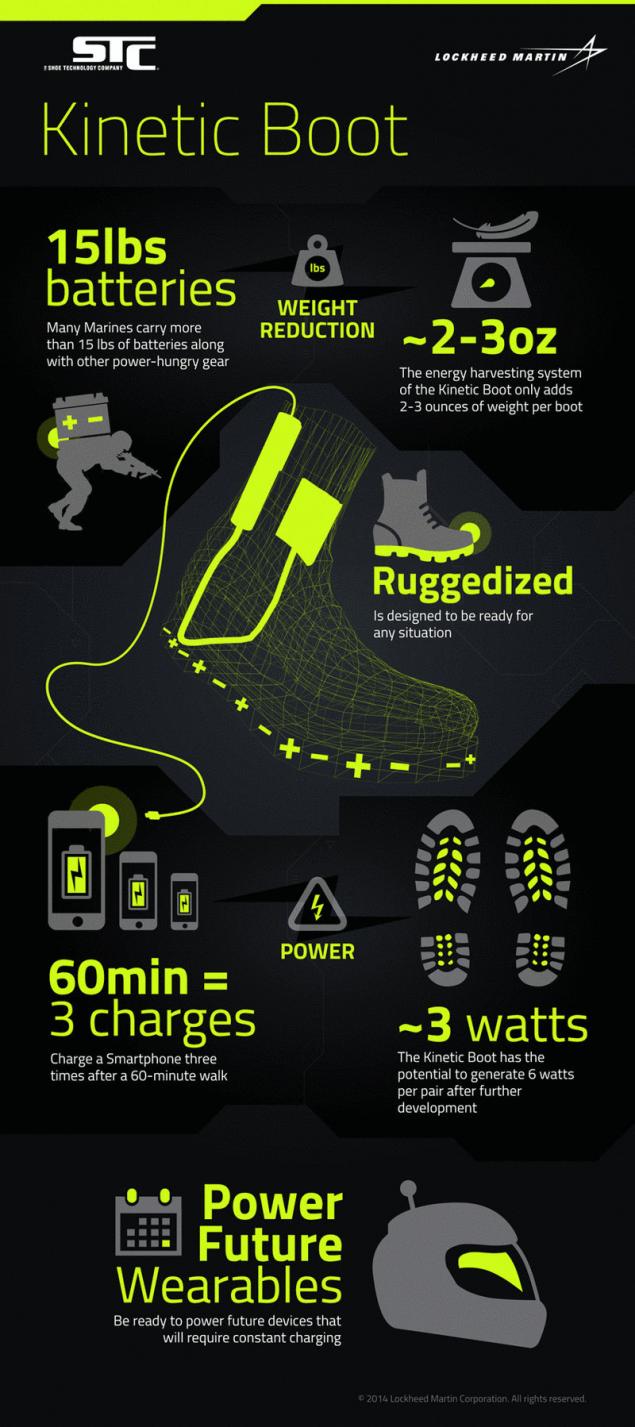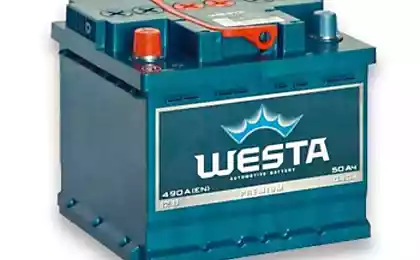469
Kinetic military boots generate energy on the go
Simply walk for one hour in the kinetic boots and energy enough to charge a smartphone 3 times. Developed by Lockheed Martin in collaboration with STC Footwear, "Kinetic shoes" is designed to ensure that soldiers charged their devices and radios on the go.

The weight the soldier carries adds only a few ounces. This is much less than solar panels and batteries that soldiers use now. Marines carry around 15 pounds of batteries to charge all their devices while staying outside the barracks. The weight of the battery leads to the fact that soldiers get tired faster. To lighten their load, Lockheed Martin decided to come up with a way to generate electricity on the move and to minimize additional weight.

After going through various options, the company decided to use the kinetic energy generated by walking and movement. And how to make it easier, if not by boots worn by the soldiers. Lockheed Martin in conjunction with the canadian manufacturer of footwear STC Footwear has integrated all the necessary components, such as generators, batteries and power cords directly into the shoes.

As a result, the light appeared footwear that weighs 3 oz more than the usual, but it has a potential capacity of 1.5 Watts. Worth it just to walk for 60 minutes, and boots will produce energy, sufficient for three recharges on iPhone 5. "The concept of power generation through body movement, especially with walking, is not something relatively new, but the efficiency of such systems is still remained a problem, said Rebecca Schwartz, head of nanotechnology at Lockheed Martin Information Systems & Global Solutions. — However, by applying the latest developments in the field of materials and manufacturing technology, we were able to significantly improve the quantity of generated power".

Lockheed Martin and STC Footwear recently showed off their "Kinetic shoes", after testing in the field. Felt boots in may Marines on an experimental operating base ExFOB). After further testing and design improvements, Lockheed hopes to create a more durable construction, which will generate even more energy, to be able to use, even in extreme conditions and be more reliable for soldiers in the field. As stated by the developers, this technology has the potential to be applied not only to military personnel, and ordinary shoes for everyday use.
Source: www.ecobyt.ru/

The weight the soldier carries adds only a few ounces. This is much less than solar panels and batteries that soldiers use now. Marines carry around 15 pounds of batteries to charge all their devices while staying outside the barracks. The weight of the battery leads to the fact that soldiers get tired faster. To lighten their load, Lockheed Martin decided to come up with a way to generate electricity on the move and to minimize additional weight.

After going through various options, the company decided to use the kinetic energy generated by walking and movement. And how to make it easier, if not by boots worn by the soldiers. Lockheed Martin in conjunction with the canadian manufacturer of footwear STC Footwear has integrated all the necessary components, such as generators, batteries and power cords directly into the shoes.

As a result, the light appeared footwear that weighs 3 oz more than the usual, but it has a potential capacity of 1.5 Watts. Worth it just to walk for 60 minutes, and boots will produce energy, sufficient for three recharges on iPhone 5. "The concept of power generation through body movement, especially with walking, is not something relatively new, but the efficiency of such systems is still remained a problem, said Rebecca Schwartz, head of nanotechnology at Lockheed Martin Information Systems & Global Solutions. — However, by applying the latest developments in the field of materials and manufacturing technology, we were able to significantly improve the quantity of generated power".

Lockheed Martin and STC Footwear recently showed off their "Kinetic shoes", after testing in the field. Felt boots in may Marines on an experimental operating base ExFOB). After further testing and design improvements, Lockheed hopes to create a more durable construction, which will generate even more energy, to be able to use, even in extreme conditions and be more reliable for soldiers in the field. As stated by the developers, this technology has the potential to be applied not only to military personnel, and ordinary shoes for everyday use.
Source: www.ecobyt.ru/























